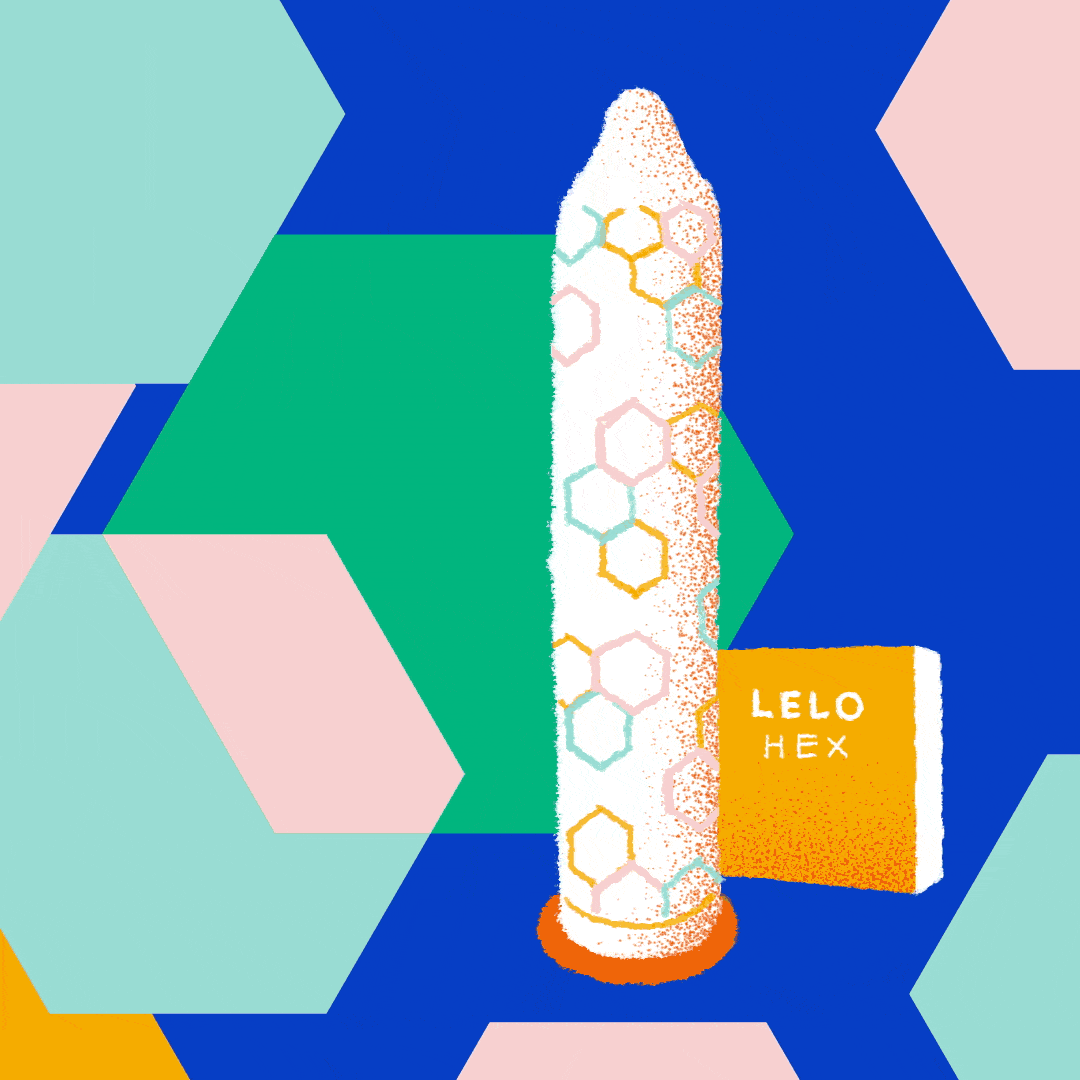What is a condom? For years, it’s been a single smooth dollop of latex poured onto a mold, then rolled off when it’s cool. It’s been that way for 70 years – the last major change to the condom was the introduction of the reservoir tip, and that’s been around for decades.
We wanted to make something radically different with existing condom materials. A new design that would address the three core issues of comfortable fit and reliable strength without sacrificing sensation.
That’s what we did with HEX™. We changed the physical structure of the condom itself, in an entirely unique and intuitive way.

Early in the seven year development of the LELO HEX condom we were researching people’s attitudes to safe sex, and quickly realized that it’s not the availability of condoms that puts people off using them. It’s not the material either: latex is actually pretty damn good for the purpose, unless you have a latex intolerance. There’s nothing out there yet that would make a respectable replacement, certainly not an affordable one. Graphene, for example, is still many years away from being commercially available and would be much, much more expensive.
So if the problem is not the availability or the material, what is it? Well, in a word, it’s the appeal. People have for so long had it ingrained in their minds that condoms fit poorly or desensitize sex. We wanted to develop a condom that changes people’s attitudes, and to do that, we had to change the condom itself.
1We spent a long time looking to nature, searching for evolutionary solutions it had come up with to generate structures that were simultaneously strong, light, thin and flexible. We considered many, but the one that appeared the most and that we kept returning to – and eventually settled on – was the hexagon.
Circles don’t tessellate so would leave weak patches on the surface of a condom. Squares tessellate too perfectly, making the straight lines susceptible to long rips. Triangles are not regular enough and the corners are too acute. Hexagons, though, are the perfect combination of short lines, internal angles and tessellation.
There’s a reason why honeycombs are the shape they are, and why snake scales move the way they do. Nature knows it, dragonflies know it, Fibonacci knew it, and we know it. It’s because the hexagon is strong, symmetrical, even, and tessellates perfectly. It’s nature’s go-to shape for strong, light stuff, and that’s why the structure of graphene is also… you guessed it, hexagonal.
1
So we took this finding and applied it to the latex of HEX condoms, re-engineering it so that the condom is comprised of a network of 350 interconnected hexagonal cells. These hexagons flex and stretch to fit a wide number of shapes securely, and the grooves that sit between the cells are actually on the inside of the condom instead of the outside. This creates an outside surface remains perfectly smooth while providing the same security against slippage as grooved tires do on wet surfaces.
The added value of this design is how it allows body warmth to be transmitted between partners, for a more sensitive and more intimate sexual sensation. All this, while remaining one of the thinnest latex condoms on the market today.
This full condom redesign represents one of the most significant advances in condom technology for generations. What makes it so special is the almost architectural way in which it diffuses energy around the wearer and between the partners, and how it joins organic principles of strength and thinness from nature with advanced, bespoke technological advances.
Related:
